Temple Research Observatory (TRO) is currently located in Lexington, MO. TRO exists primarily to do science and promote astronomy.
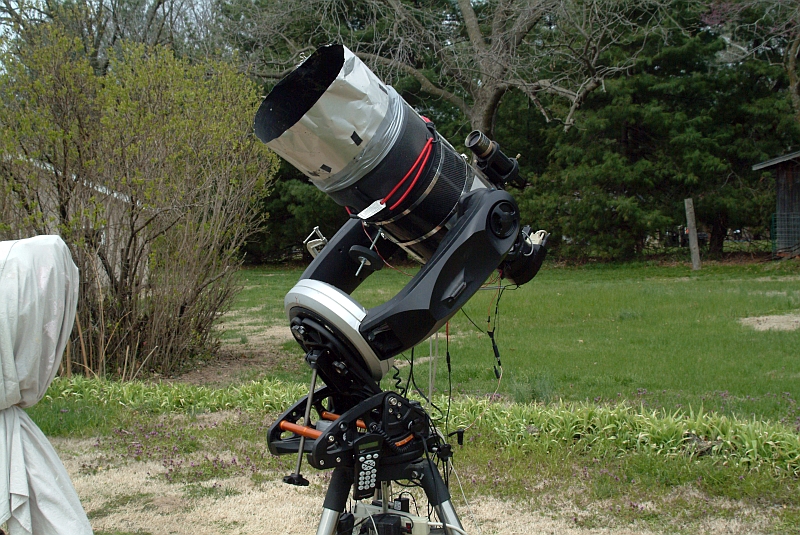
Temple 28 is one of the main instrument of TRO. It’s used to image Planetary Nebulae and dimmer variable stars. It is a Celestron 11″ CPC Schmidt-Cassegrain with a custom carbon fiber tube, Celestron Super Wedge and a SBIG ST-8e photometric mono CCD camera. Temple 28 is similar to the Wright 28 that was used for a number of years as one of the AAVSONET telescopes for the AAVSO. This is a quality instrument with quality components.
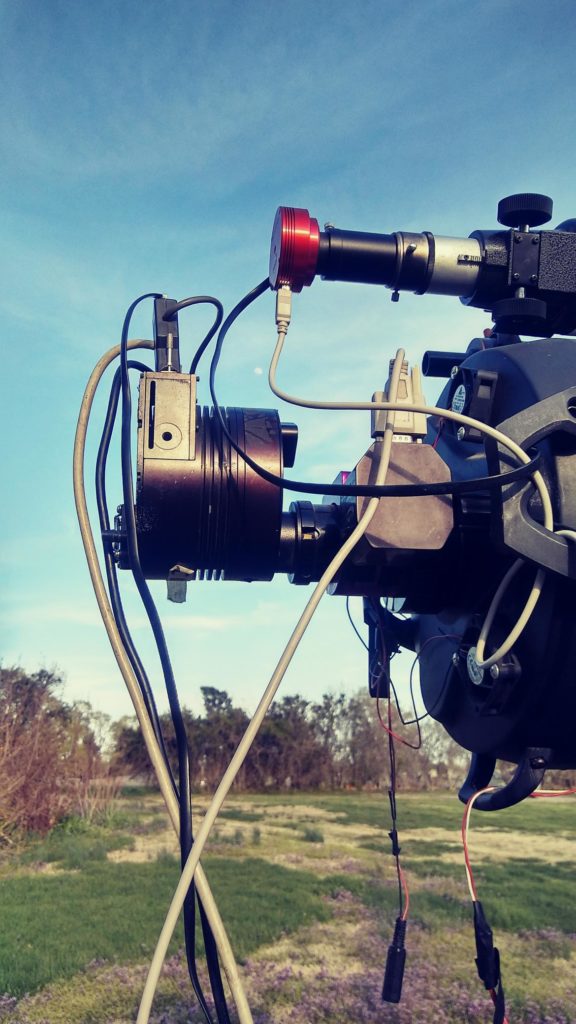
Though the ST-8e camera has an internal guiding chip it is a lot easier to find a suitable guide star with an external guide scope. So a homemade 70mm refractor was added. Temple 28 was extensively modified including rebalancing the tube for a camera before I got it. Since it has a different balance point than a regular CPC it was difficult to get it balanced with online instructions.

Temple 10 is configured with an Explore Scientific AR102 refractor. The inherent Chromatic Aberration is not much of an issue with this set up since it is almost exclusively used for photometry with narrow-band photometric filters. The mount is a Sirius mount with an Atlas Tripod. The tripod adds about 5 extra pounds of equipment carrying capacity. The AR102 Refractor is currently doing wide field images of variable star fields. It was intended to be a grab and go scope but has become almost exclusively, a goto imaging scope using an ATIK 414 mono camera with photometric filters.
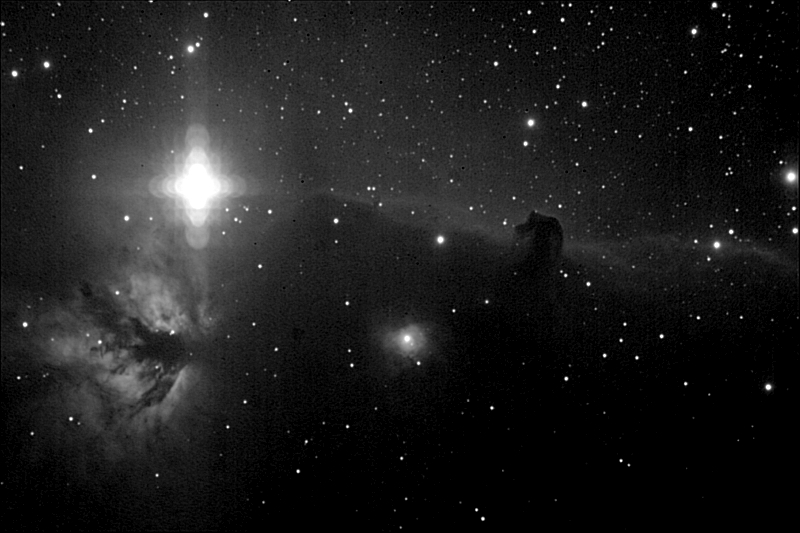
The above is an image taken with AR102 and the ST-8e camera. It used an external guider and even though this image was done with a Sloan g filter, it has parts that are overexposed but is still pretty impressive for a 300 hundred dollar telescope!
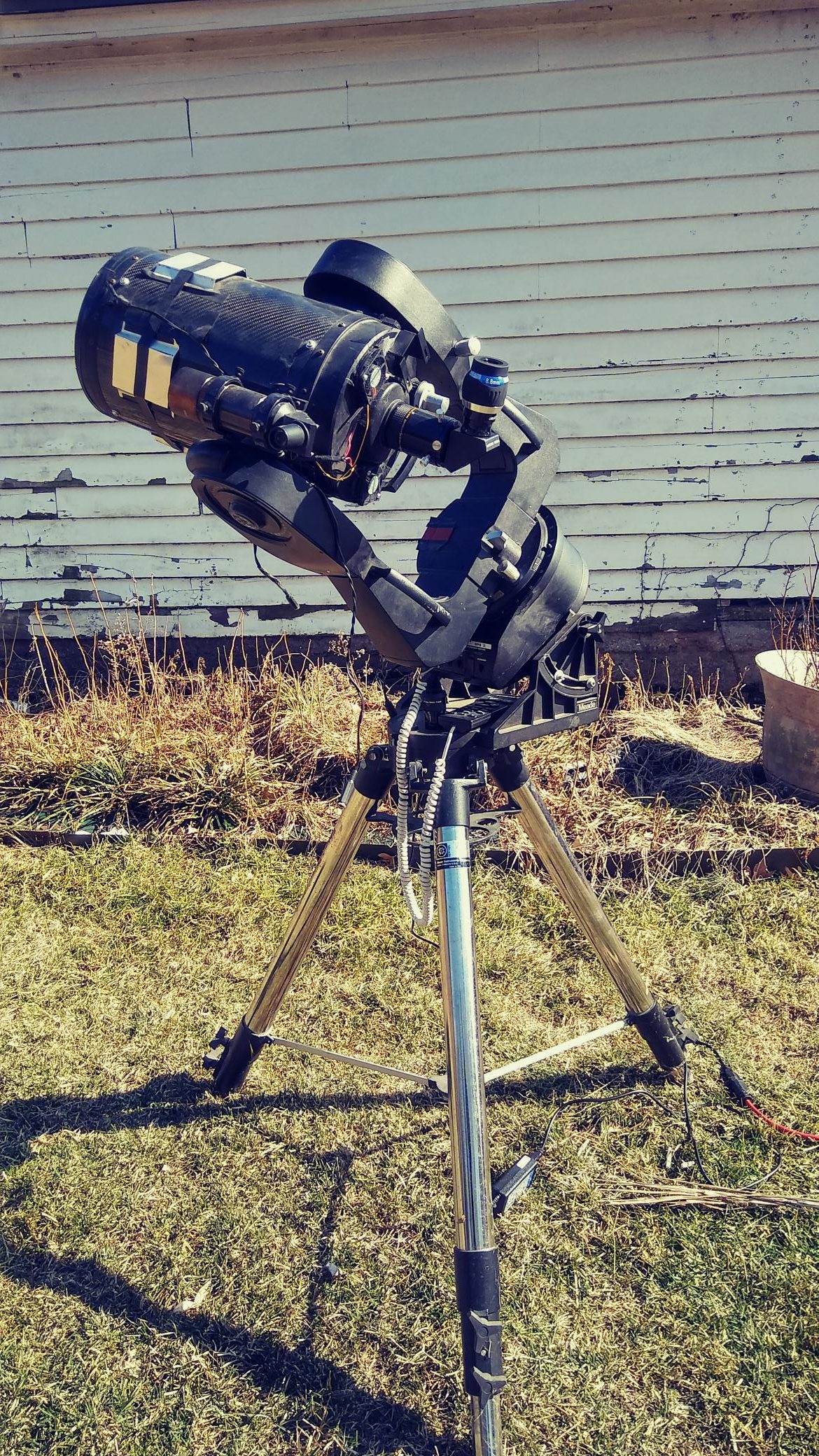
One of the auxiliary scopes is Temple 20, an 8″ Meade LX200 GPS. This scope was used in an Amateur/Professional collaboration for a year using an ST-7E camera. With the 6.3 focal reducer it is a good platform for a Star Analyzer grating.

“The Beast” a 6″ refractor rounds out the serious instruments. “The Beast” is brought out to image Mars and other planets. A 6″ refractor can provide good images of Mars or other objects. However, it was the telescope I used to take one of my first scientific images and got me hooked on studying planetary nebulae. It is a “classic” refractor and very fun to use.
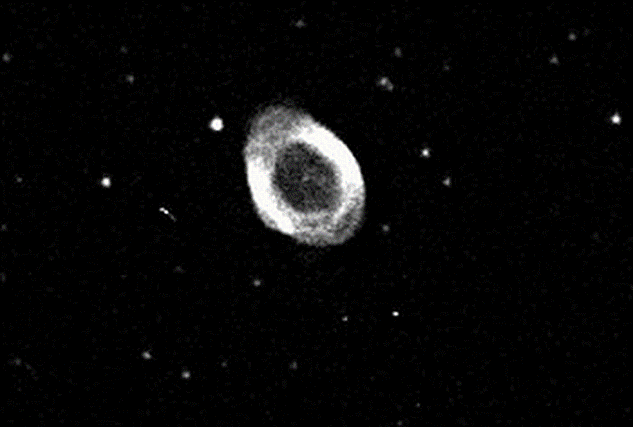
First real image using the 6″ refractor, V filter, Celestron ASGT mount and a ST-7E ccd.
The two refractors share a Sirius mount controlled by a laptop. The AR102 is light and short, so it makes a better scope for the lighter Sirius mount. The 6″ works but is more sensitive to wind and bumps.
On this website is a number of topics. Most are written from the perspective of a serious amateur astronomer. There are also some more advanced topics for those who have a more scientific bent. Enjoy your visit here!
Paul Temple
Old Google Website! https://sites.google.com/site/researchobservatory/paul-temple